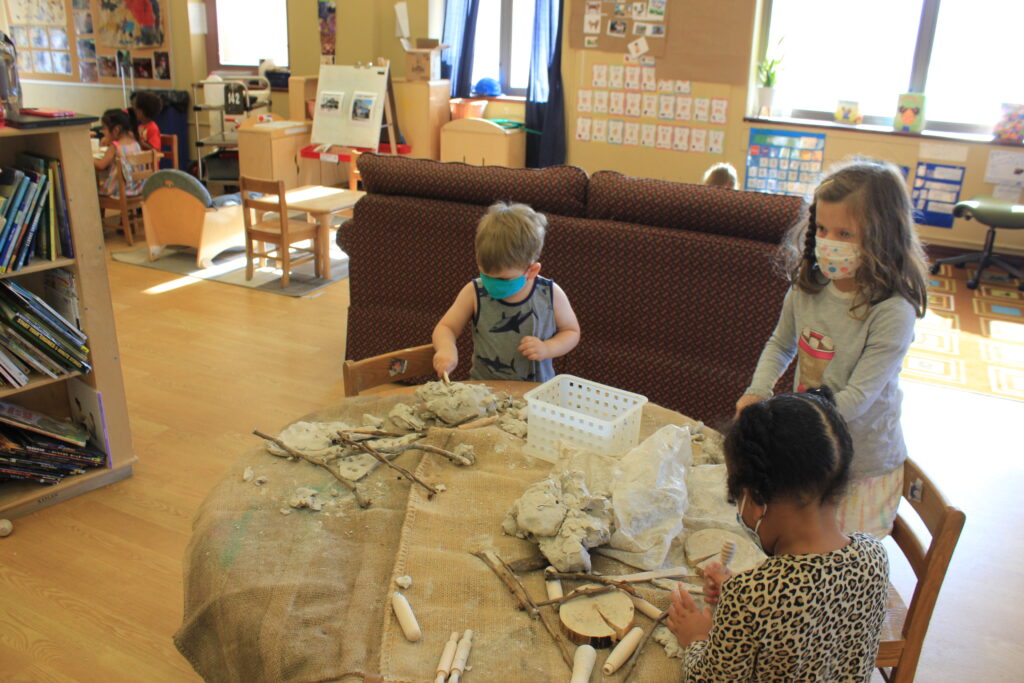
Loose parts have been a more popular term for open-ended toys, materials and invitations to use in all areas of classrooms to engage curious learners and supply a rich opportunity for language and interaction. They are not limited to anything which means ALL materials can be considered a loose part; ensuring that the materials are safe for the children by their age and capabilities. Some materials may be completely new to a child, for instance using a golf tee and hammer to practice fine motor and gross motor skills by hammering into a pumpkin. This is a starting point and then graduating to using large roofing nails to further engage the mind and body with the tools and materials used. Conversations evolve around the feel of the tools, weight, sharpness, how to use it safely as well as where have children and teachers have seen these materials in their home or books.
Teachers use grapat wood shapes to engage creativity in the cooking space to create foods, math provocations to include counting and patterning, as well as providing open ended ideas to appear with playdough and clay. Grapat pieces offer a natural wood element or vibrant colors with pieces that are not common in shape or texture.
Loose parts play also engages language and literacy skills in enabling the children to use sticks, bricks, figurines, and pipe cleaners to retell stories like the story of the Three Little Pigs. It also allows children to expand and change the story and use the characters and materials to tell their own version. By scaffolding a baseline story with loose parts in various forms, it opens a pathway for neurotypical as well as children with diverse abilities. Plain wooden peg dolls can be an animal, person, candle, astronaut or it can also give children a way to express their own voice and personality.
Other examples of children leading loose parts engagement is using sand, sticks and stones in the sensory table. Several of the preschool learners were making marks not only with pencils and markers but starting them with their hands, fingers and natural elements showed them more pathways to creativity and it’s all through play. Nothing is forced or necessary, but all ideas are generated by teachers’ observations of their play and requests. Teachers connected the story of Stick and Stone by Beth Ferry that speaks of friendships, kindness and nature and reenactments of the story could occur using these materials and the children’s memory. The class spends a lot of time at the light table, and teachers found that using wooden X’s and translucent cubes provided opportunities for collaboration of materials and planning for what might make the experience more challenging. The children were challenged to draw what they had created; so, they independently chose paper, a clipboard and writing tools and went to work. There isn’t a right or wrong way to create this way; the individual child or group has complete control within the context of safety and the classroom agreement of interactions.
Loose parts can show up anywhere and when teachers bring these materials outside into a new environment, it gives children a new perspective and engagement that inside may not have occurred. The children and teachers built rocket ships, cars, and animals with these connectors and stacked them as high as they could before they fell over. Some children discovered that they could wear them on their arms and transform into robots. The sky is the limit with ideas and the benefit to children with this freedom allows their brains to develop in a manner that their creativity, confidence and language are solid by the time they leave preschool and further engage in next level education.









